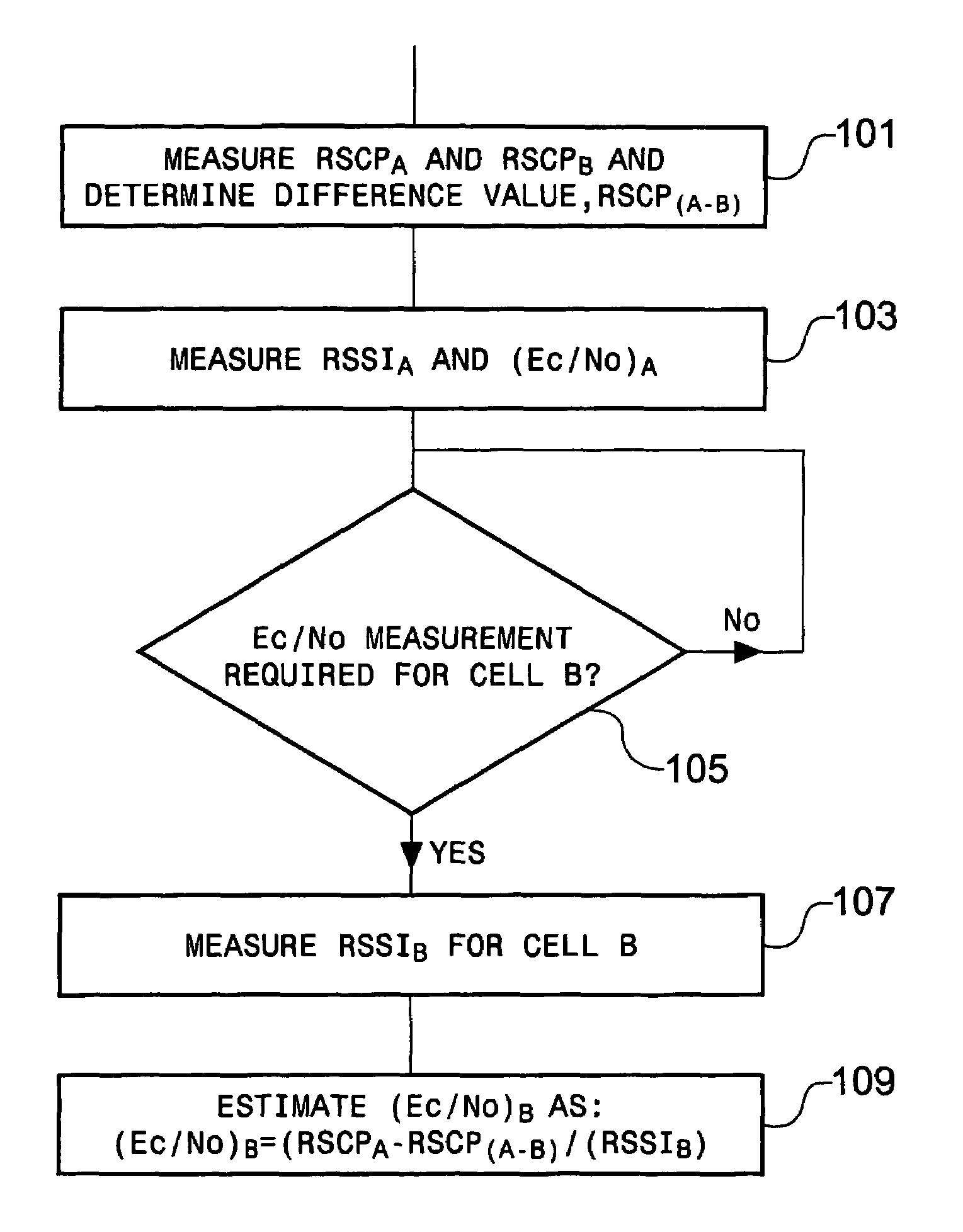Estimating signal strength measurements in a telecommunications system
a telecommunications system and signal strength technology, applied in the direction of transmission monitoring, modulation, electrical equipment, etc., can solve the problems of insufficient optimal tuning of the receiver, inability to carry out inter-frequency or inter-rat (radio access technology) measurements, and increase the average power consumption
- Summary
- Abstract
- Description
- Claims
- Application Information
AI Technical Summary
Benefits of technology
Problems solved by technology
Method used
Image
Examples
Embodiment Construction
[0017]In a WCDMA based radio access network, several cells may be co-located using different frequencies. The network will have information that a particular cell, say Cell A, is co-located with one or more other cells, say Cell B.
[0018]A mobile station positioned in a given location is able to make signal measurements on common pilot channels (CPICHs) transmitted from a serving cell and any co-located cells.
[0019]FIG. 1 shows the steps involved in estimating a measurement according to a first aspect of the present invention.
[0020]In step 1, the network instructs a mobile station to perform a predetermined measurement in Cell A and in co-located Cell B, for example a received signal code power (RSCP) measurement, hereinafter referred to as RSCPA and RSCPB, respectively. These measurements are reported by the mobile station to the network.
[0021]The network determines the difference between the two signals (RSCPA−B) which is stored for future reference, step 3.
[0022]Once the differenc...
PUM
 Login to View More
Login to View More Abstract
Description
Claims
Application Information
 Login to View More
Login to View More - R&D
- Intellectual Property
- Life Sciences
- Materials
- Tech Scout
- Unparalleled Data Quality
- Higher Quality Content
- 60% Fewer Hallucinations
Browse by: Latest US Patents, China's latest patents, Technical Efficacy Thesaurus, Application Domain, Technology Topic, Popular Technical Reports.
© 2025 PatSnap. All rights reserved.Legal|Privacy policy|Modern Slavery Act Transparency Statement|Sitemap|About US| Contact US: help@patsnap.com



